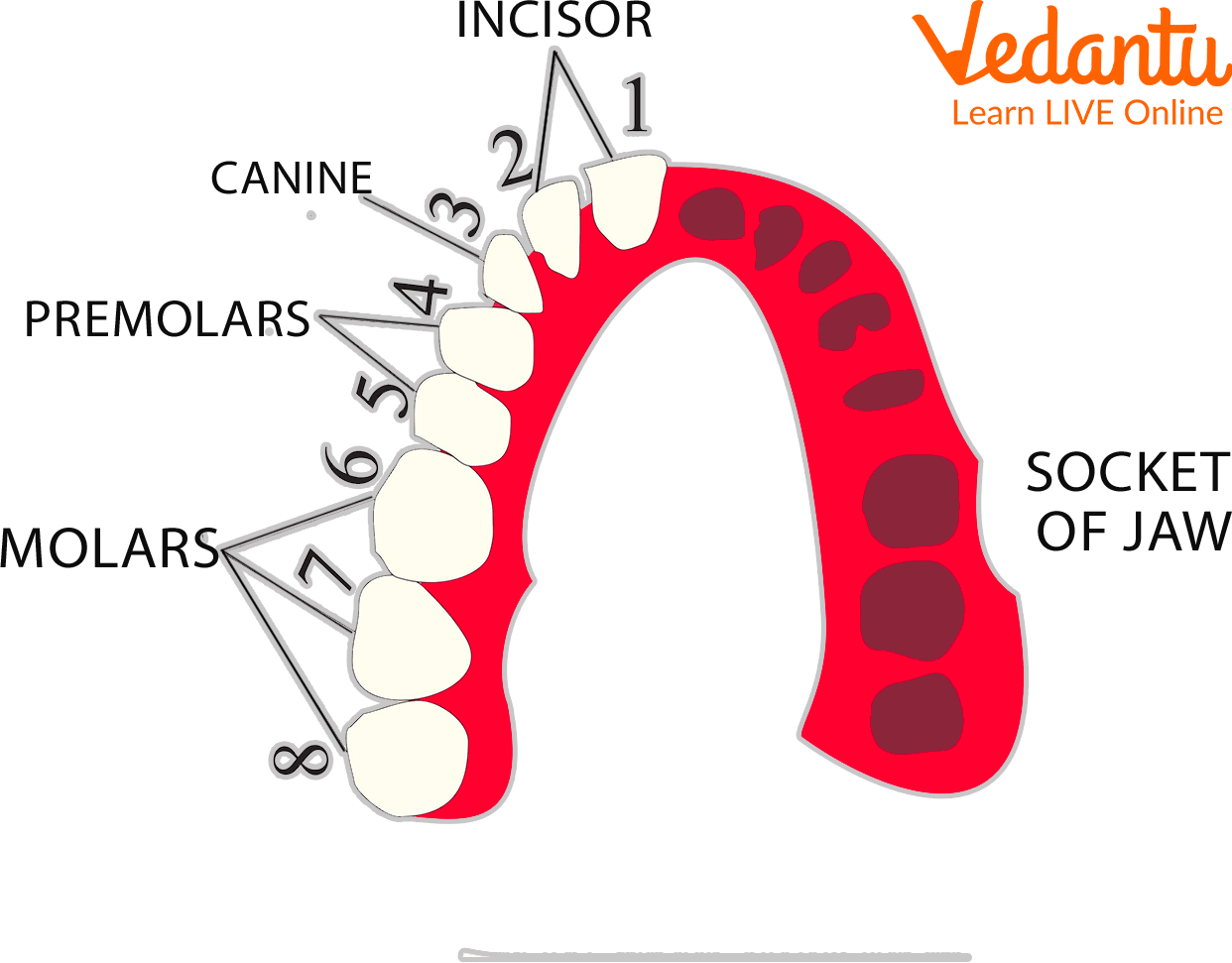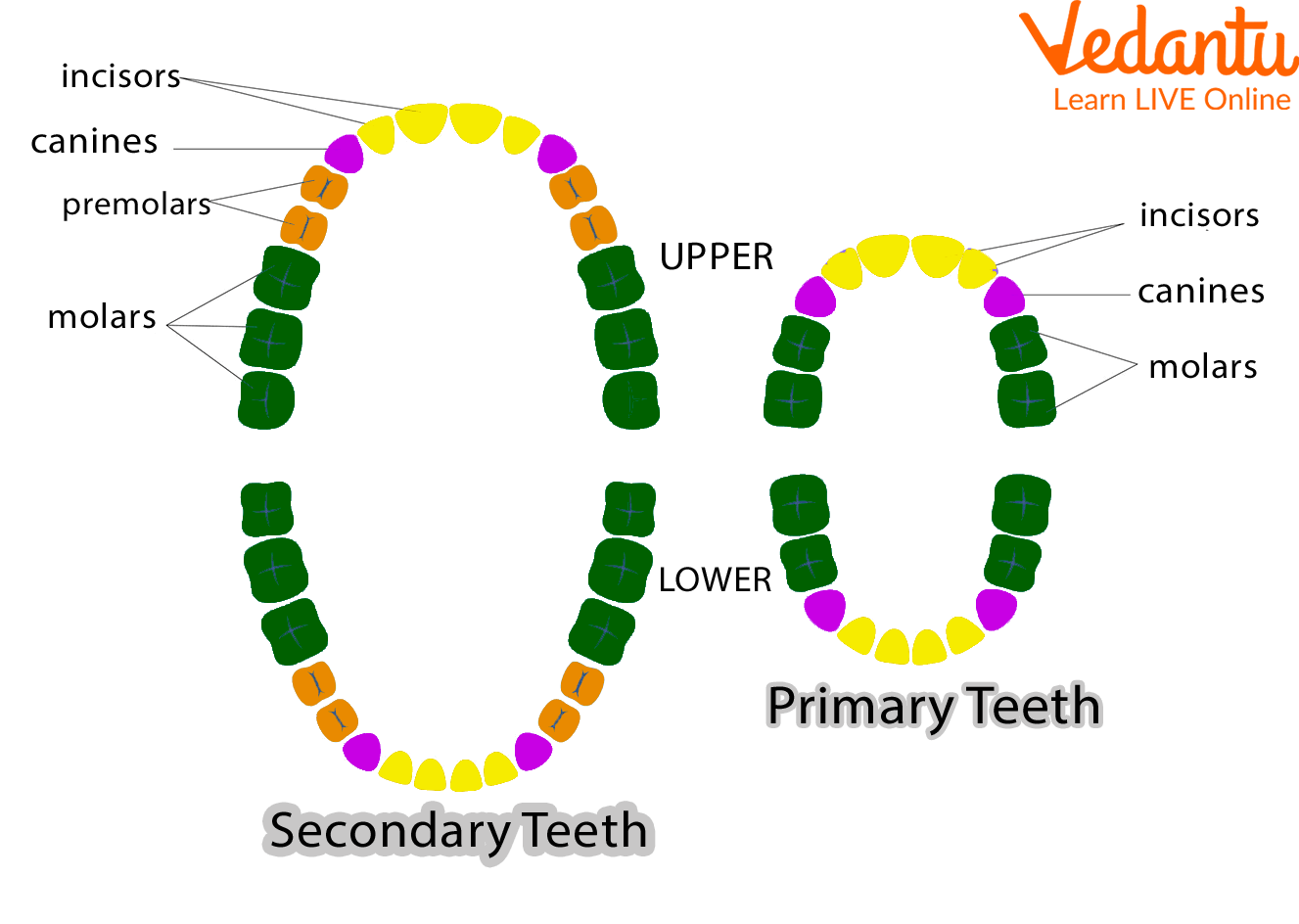




Teeth: Tough and Strong!
Teeth are structures made up of calcium and certain proteins and are one of the strongest parts of our body. These are mainly used for tearing, chewing, and grinding of the food that we eat. It also is needed for speaking clearly. Teeth appear in two sets in humans.
The first set that appears is known as milk teeth and is only 20 in number. These teeth start to appear in a child post 6 months of birth and all of them appear till age 3.These teeth get loose and then fall off after age 6 and are replaced by new permanent teeth. Permanent teeth as the name suggests stay for a lifetime.
Types of Teeth
A healthy adult is known to have a total of 32 teeth. There are a total of 8 incisors, i.e. 4 incisors in the upper jaw and 4 incisors in the lower jaw. There are 4 canines, i.e. 2 canines in the upper jaw and 2 in the lower jaw. There are 8 premolars, i.e. 4 premolars in the upper jaw and 4 in the lower jaw. And finally, there are 12 molars, i.e. 6 molars in the upper jaw and 6 in the lower jaw.

Arrangement of Teeth in a Jaw
Incisors
There are a total of eight incisor teeth and all of them are in the frontal part of the mouth. These teeth are small chisel-like. The ends are very sharp and are used to take a bite of the food.
When we bite a fresh apple or guava the marks formed on the fruit are of our incisors as it cuts out a portion of the fruit and thus we chew it with the rest. These are the first teeth that appear in kids at about 6 months of age. Adult incisors are known to appear between the age of 6 and 8.
Canines
The canines are seen placed next to the incisors on the upper and lower jaw.
There are two canines on the upper jaw on either side of the incisors and two on the lower jaw on either side of the incisors.
These are very sharp, pointed in shape and are mainly used for tearing the food.
These are mostly used while biting meat and any other rough and hard food item.
The canines start to appear in a baby at about 16 months and 20 months of age.
The canines on the upper jaw appear first and thereafter the lower jaw canines.
The canines in adults appear in the opposite manner.
It begins with the lower canines and the lower canine appears at age 9 and thereafter the upper canines appear at around the age of 11 or 12.
Premolar
There are a total of eight premolars present right beside the canines. There are a total of four premolars on the upper jaw and four premolars on the lower jaw. Premolars are large rectangular teeth and are larger than the canines and incisors.
They are mostly flat with ridges on the upper surface used for crushing and grinding the food and converting them into fine small pieces and that makes it easier for us to swallow. Babies do not have any premolars, their molars are replaced with a set of premolars when they grow a little old.
Molars
These are known to be the biggest and strongest teeth in our jaws.
We have a total of six on the upper jaw and three on either end of the jaw.
And six on the lower jaw and 3 each at either end of the jaw.
The large surface area is used for the grinding of the food.
As we take a bite and begin chewing, the tongue pushes food towards these molars for proper grinding. This grinding makes the food fine and particles small enough for ease of swallowing.
Summary
An adult human being has 32 teeth in mouth. In childhood, all humans have milk teeth then these milk teeth get replaced by permanent teeth. Between the age of 17 to 25 wisdom teeth appear absolutely at last. The enamel of the teeth is the toughest part of the entire body and it can be much harder than the bones. The one third of the teeth are mostly under the gums and that is why they are so solid.

Primary Teeth and the Permanent Teeth Set
FAQs on Teeth Names: Learn About Dental Anatomy
1. Which teeth are used for tearing meals?
Canines are used for the tearing of meat. The meal is torn and ripped apart using these teeth because they are the sharpest.
The four canines, which are thought to be the sharpest teeth, are mostly employed for ripping and tearing food. The primary canines emerge between the ages of 16 and 20 months, with the upper canines emerging somewhat before the lower canines.
With a long snout, bushy tail, upright, pointed ears, and well-developed canine and cheek teeth, canines are often slender and long-legged animals. They feed on all kinds of animals, and some even consume carrion and plant stuff.
2. What is the importance of teeth?
Our teeth play such a crucial part in our daily life. They also give our faces their form and help in speech and speech clarity. They help in chewing and digestion of food. A smile provides additional advantages in daily life. It can improve our self-confidence and have an impact on our professional, and social life.
Digestion, or the act of cutting, combining, and grinding food so that the tongue and throat may form it into a mouthful that can be digested, is the main purpose of teeth.









